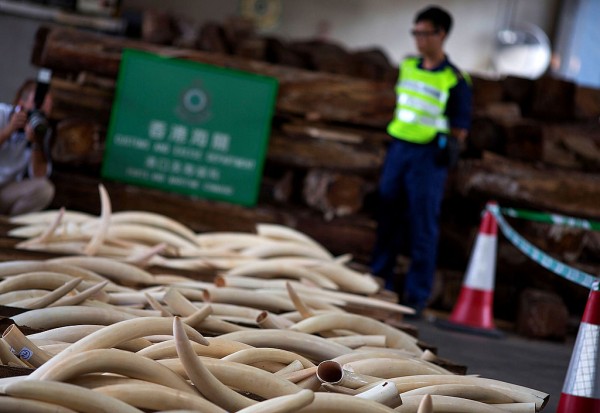Kenya Sets Huge Ivory Stockpile Ablaze
| Charissa Echavez | | May 03, 2016 08:15 AM EDT |
(Photo : Getty Images) Kenya burned $172 million worth of wildlife goods on Saturday.
Kenyan President Uhuru Kenyatta set fire to a huge stockpile of ivory on Saturday to show the country's serious commitment to putting a stop to illegal ivory trade and saving Africa's elephants.
Over 100 tons of ivory and 1.3 tons of rhino horns were piled in pyres at the Nairobi National Park. The ivories, which amount to about 6,700 elephant tusks, represents the entire stocks seized by the Kenyan government.
Like Us on Facebook
"The height of pile of ivory before us marks the strength of our resolve. No one, and I repeat, no one, has any business in trading in ivory, for this trade means death - the death of our elephants and the death of our natural heritage," Kenyatta said.
Africa's elephants could be on the verge of extinction within decades, experts said.
However, the move was not totally applauded, as some conservationists believed the burning will make the commodity rarer thus increasing its worth and at the same time increasing poaching activities.
Richard Leakey, a conservationist from Kenya, said he was "humbled, sad, and encouraged."
"We shouldn't have to burn 105 tons of ivory and 1.5 tons of rhino horns," he said. "It is a disgraceful shame this continues."
According to experts, a kilogram of ivory could be worth around $1,000. The burning on Saturday lit the most number of ivory in one fire. It represents between 6,000 and 7,000 dead elephants and was estimated to be worth over $105 million (excluding the rhino horns), according to New York Times.
This is not the first time the government has burned truckloads of ivory. In 1989, the government burned a created a huge ivory bonfire. Since then, countries were doing the same, implying that ivories are useless unless they are on elephants.
Illegal ivory hunting spiked between 2009 and 2012, killing nearly 100,000 elephants.
Currently, Africa has about 400,000 to 450,000 elephants left, which is one-third of the 1.2 million during the 1970s. The situation is worse for rhinos with only about 30,000 left across Africa. In Kenya specifically, its black rhinos now count at 650, a significant decline from the 20,000 in the 1970s and 400 in the 1990s.
One rhino specie called the Northern White Rhino is becoming a rare specie, and the last three of its kind are reportedly heavily guarded in Kenya as scientists race through time to look for artificial reproduction procedure.
Kenya's income come usually from tourism, attracting tourists with safaris and premium camps. In 2015, Both China and the United States resolute to totally ban ivory trade, and these have allegedly helped bring ivory prices down, Reuters reported.
TagsKenya, illegal poaching, elephants, ivory, Rhino horns, Africa, wildlife
©2015 Chinatopix All rights reserved. Do not reproduce without permission
EDITOR'S PICKS
-

Did the Trump administration just announce plans for a trade war with ‘hostile’ China and Russia?
-

US Senate passes Taiwan travel bill slammed by China
-

As Yan Sihong’s family grieves, here are other Chinese students who went missing abroad. Some have never been found
-

Beijing blasts Western critics who ‘smear China’ with the term sharp power
-

China Envoy Seeks to Defuse Tensions With U.S. as a Trade War Brews
-

Singapore's Deputy PM Provides Bitcoin Vote of Confidence Amid China's Blanket Bans
-

China warns investors over risks in overseas virtual currency trading
-

Chinese government most trustworthy: survey
-

Kashima Antlers On Course For Back-To-Back Titles
MOST POPULAR
LATEST NEWS
Zhou Yongkang: China's Former Security Chief Sentenced to Life in Prison

China's former Chief of the Ministry of Public Security, Zhou Yongkang, has been given a life sentence after he was found guilty of abusing his office, bribery and deliberately ... Full Article
TRENDING STORY

China Pork Prices Expected to Stabilize As The Supplies Recover

Elephone P9000 Smartphone is now on Sale on Amazon India

There's a Big Chance Cliffhangers Won't Still Be Resolved When Grey's Anatomy Season 13 Returns

Supreme Court Ruled on Samsung vs Apple Dispute for Patent Infringement

Microsoft Surface Pro 5 Rumors and Release Date: What is the Latest?












